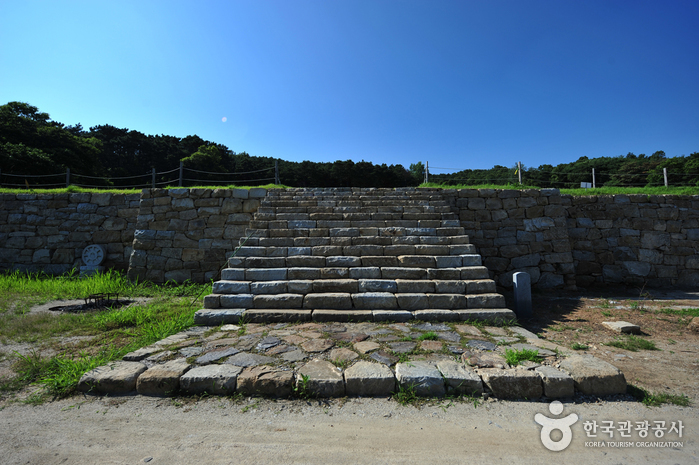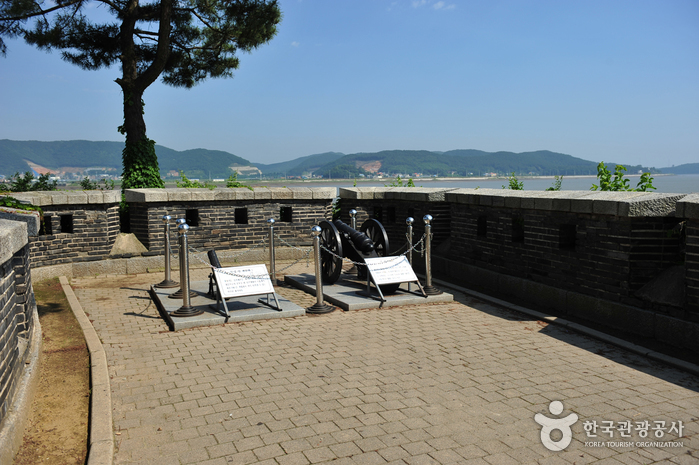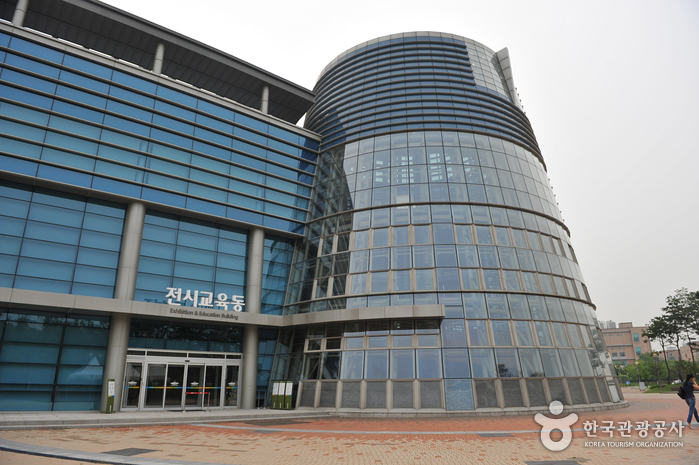Ganghwa Seonwonsa Temple Site (강화 선원사지)
10.4Km 2022-09-19
222, Seonwonsaji-ro, Ganghwa-gun, Incheon
+82-32-933-8234
Ganghwa Seonwonsa Temple Site was first discovered in 1976 during a surface examination around Ganghwado Island undertaken by the Ganghwado Island Academic Research Team of Dongguk University. The site was designated as Historic Site No. 259 in 1977. Seonwonsa Temple was built by General Choi Wu in 1245 (the 32nd year of King Gojong’s reign during the Goryeo dynasty), which was right after the transfer of the capital to Ganghwado during resistance against the Mongolian invasion.
The temple was meant to be a spiritual mainstay in fighting against Mongolia. It used to be one of the two largest temples in Korea along with Songgwangsa Temple. However, the temple was completely destroyed during the early Joseon era, leaving only the site itself. The famous wood blocks of Palman Daejanggyeong (the Tripitaka Koreana), currently housed in Haeinsa Temple at Hapcheon, are said to have been originally stored in Seonwonsa Temple. It is believed that the carved wood blocks were taken from Seonwonsa to Heungcheonsa Temple during the Joseon era and again moved to Haeinsa Temple during the reign of Sejo.
Located on a mountain slope, the presumed location of the building site extends 250 meters from south to north and 170 meters from east to west.
Pyeongchang Jinbu Makguksu (평창진부막국수)
10.5Km 2024-02-21
29 Gimpo-daero 1518beon-gil, Gimpo-si, Gyeonggi-do
Pyeongchang Jinbu Makguksu is a restaurant specializing in Pyeongchang memil makguksu (buckwheat noodles), using exclusively high-quality buckwheat flour from Pyeongchang. Their signature dishes include mulmakguksu (buckwheat noodles), bibim makguksu (spicy buckwheat noodles), and deulgireum makguksu (buckwheat noodles with perilla oil). The combination of the pleasantly spicy bibim makguksu and Jeju hanbang suyuk (boiled Jeju pork slices with medicinal herbs) is particularly noteworthy. The restaurant also offers memil jeonbyeong (buckwheat crepe), sonmandu (handmade mandu), and the seasonal hanu sagol manduguk (mandu soup), available only in winter (November to February).
Spao [Tax Refund Shop] (스파오)
10.5Km 2024-04-22
12, Gimpo-daero 1473beon-gil, Gimpo-si, Gyeonggi-do
-
Hangang Jungang Park (한강중앙공원)
10.8Km 2023-02-01
40, Chodang-ro, Gimpo-si, Gyeonggi-do
Hangang Jungang Park, a famous park in Janggi-dong that represents Gimpo New City, features a wildflower garden with the theme of native plants as well as a variety of spring flowers in Chohwawon Garden and a pleasant trail. Continuing from a vast grass plaza to Laveniche Waterside Park, this park is where the citizens of Gimpo New City can rest and relax. As you run along the Golden Waterway, you will be able to reach Laveniche, another pride of Gimpo with abundant things to eat, buy and enjoy. You can also take a leisurely walk, jog, or ride a bicycle.
Yeongjong Grand Bridge (영종대교)
11.0Km 2022-07-26
Jangdo Island (Gyeongseo-dong, Seo-gu, Incheon-si) ~ Yeongjongdo Island (Unbuk-dong, Jung-gu, Incheon-si)
Yeongjongdaegyo Bridge connects the mainland of Incheon with Yeongjongdo Island that is home to the Incheon International Airport. Until the construction of this bridge, the only way to get to and from Yeongjongdo Island had been by boat. The 4.4 kilometer-long Yeongjong Bridge is the world’s first 3-dimensional self-anchored suspension bridge. The bridge carries both highways and rail lines on its decks, and 10,000-ton ships can pass under the bridge. The bridge was designed to withstand strong winds and earthquake.
It is the first bridge in Korea to have been completed through private capital inducement project. In addition to its function as a bridge, it is also an architectural beauty as the shape of the cable and the girder was designed to symbolize the eaves of the traditional Korean tile-roofed house. In 2002, Yeongjongdaegyo Bridge won the Tanaka Award by the Japan Society of Civil Engineers for the first time in Korea.
Gapgotdon Watchtower (갑곶돈대)
11.0Km 2021-01-18
18, Haeandong-ro 1366beon-gil, Ganghwa-gun, Incheon
+82-32-930-7077
Gapgotdon Watchtower was built to protect the Ganghwa Straits from invasion when the Goryeo Kingdom moved their capital to Ganghwado Island. The fortified area served as a highly strategic location for the Goryeo Kingdom, and had endured multiple invasions by the Mongolian troops between 1232 and 1270.
The watchtower was fortified in the Joseon dynasty by King Sukjong in 1679 and had once fallen during the French campaign against Korea in 1866. In 1977, the site was restored to its original form. The cannons exhibited at the current site were made during the Joseon dynasty to attack outside invaders from sea.
National Institute of Biological Resources (국립생물자원관)
11.0Km 2023-04-13
42, Hwangyeong-ro, Seo-gu, Incheon
+82-32-590-7000
Opened in October 2007, the National Institute of Biological Resources is the largest collection preservation facility in Northeast Asia. The institute collects, preserves, manages, and conducts research on biological resources with the aim of growing into a focal biological resource hub of Northeast Asia. The institute is comprised of a spine-shaped collections and research center and a leaf-shaped exhibition and education center. The exhibition hall has 3,905 specimens of 1,287 native species on display. Korea's diverse ecosystems are recreated as highly detailed dioramas at the exhibition hall. A small restaurant is located inside the research center, and the extensive grass field in front of the institute provides an ideal picnic spot.
[Ganghwa Nadeul-gil Course 2] Homeland Fortification Trail ([강화 나들길 제2코스] 호국돈대길)
11.0Km 2021-08-11
24, Cheonghadong-gil, Ganghwa-gun, Incheon
+82-32-934-1906
The Ganghwa Nadeul-gil Trails are a collection of walking paths along the coast of Ganghwa Island that connect the watchtowers and and walls of Ganghwasanseong Fortress, as well as royal tombs and other historically significant sites from the Goryeo dynasty that dot the island.
[Ganghwa Nadeul-gil Course 2] Homeland Fortification Trail
Course 2 stretches over a 17 kilometer area between Gapgotdon Watchtower and Chojijin Fort. This trail showcases the history of the island and the changes that happened before and after the opening of the port. The course follows a coastal road that is particularly beautiful in spring and fall.
Laveniche March Avenue (라베니체 마치에비뉴)
11.1Km 2023-08-08
Janggi-dong, Gimpo-si, Gyeonggi-do
Laveniche March Avenue is a shopping avenue established along the artifical Golden Waterway in Gimpo, Gyeonggi-do. The area became a popular attraction after appearing in the popular drama series "Tale of the Nine Tailed (2020)" and several other television shows. The waterway sparkles in the sunlight during the day and glistens with the city lights at night, offering a romantic scenery anytime of the day.
Lotte Mart - Geomdan Branch [Tax Refund Shop] (롯데마트 검단점)
11.1Km 2024-04-23
581, Wondang-daero, Seo-gu, Incheon
-


![Spao [Tax Refund Shop] (스파오)](http://tong.visitkorea.or.kr/cms/resource/08/2880508_image2_1.jpg)


![[Ganghwa Nadeul-gil Course 2] Homeland Fortification Trail ([강화 나들길 제2코스] 호국돈대길)](http://tong.visitkorea.or.kr/cms/resource/05/1895205_image2_1.jpg)
![Lotte Mart - Geomdan Branch [Tax Refund Shop] (롯데마트 검단점)](http://tong.visitkorea.or.kr/cms/resource/87/2882787_image2_1.jpg)
 English
English
 한국어
한국어 日本語
日本語 中文(简体)
中文(简体) Deutsch
Deutsch Français
Français Español
Español Русский
Русский